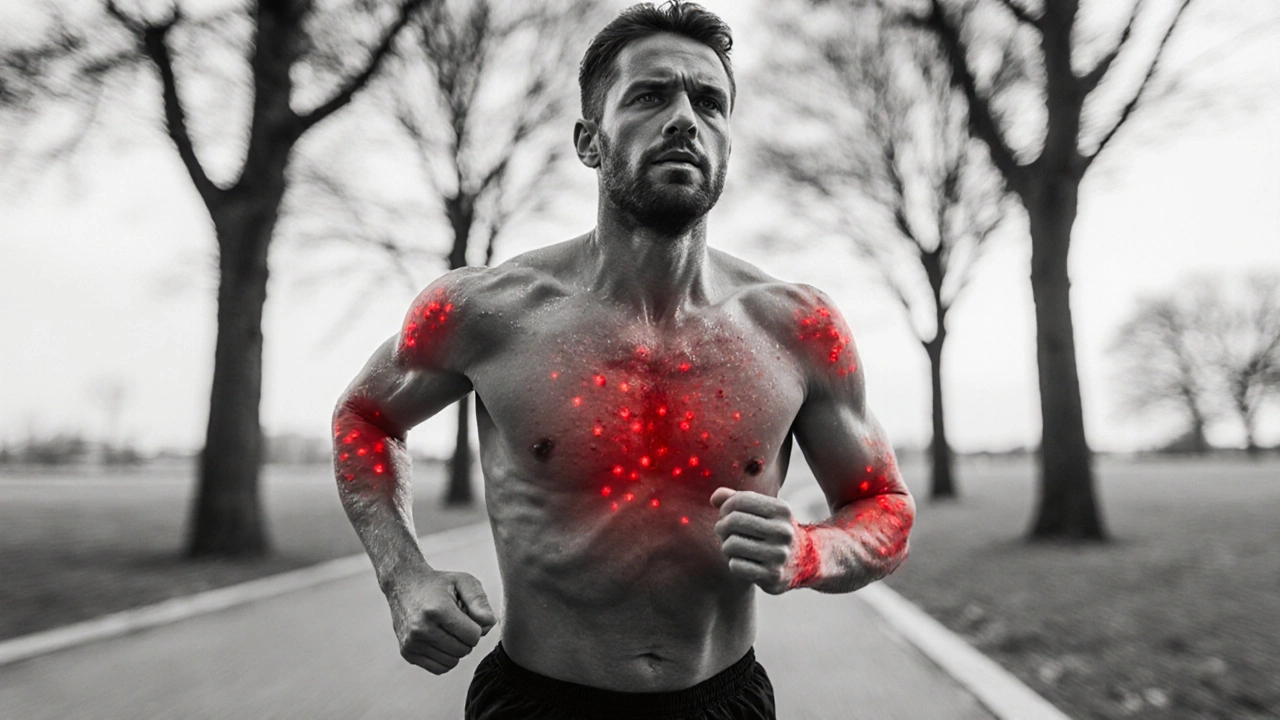Exercise-Induced Allergies: Causes, Symptoms & Management
When dealing with Exercise-Induced Allergies, allergic reactions that start during or immediately after physical activity, often driven by a sudden rise in body temperature and increased airflow. Also known as exercise‑induced anaphylaxis, it can affect the skin, airways, or cause a full‑body response, limiting how long or intense you can train. People often mistake these episodes for ordinary sweat irritation, but they involve real immune activity. The hallmark is a quick onset of itching, hives, wheezing, or even faintness within minutes of starting a workout. Recognizing the pattern early can mean the difference between a quick break and a medical emergency.
Two conditions sit right beside exercise‑induced allergies on the symptom spectrum. Allergic Rhinitis, inflammation of the nasal passages triggered by allergens like pollen or dust can flare up when you run outdoors, because faster breathing pushes more particles into the nose. Similarly, Exercise‑Induced Asthma, bronchoconstriction that occurs after exertion, especially in cold or dry air shares the same trigger—airflow‑related irritation—but focuses on the lungs. Both can masquerade as an allergy attack, yet they each require distinct treatments such as nasal steroids for rhinitis or inhaled bronchodilators for asthma. Understanding these nuances helps you pick the right medication and avoid unnecessary avoidance of activity.
What Happens Inside: Mast Cells, Histamine, and Triggers
The immune side of the story starts with Mast Cells, immune cells that store histamine and other inflammatory mediators. When you heat up, these cells can degranulate, spilling histamine into surrounding tissue. Histamine then binds to receptors in the skin and airways, causing the classic itch, redness, and swelling. Common triggers include high‑intensity interval training, outdoor runs in pollen‑heavy seasons, or even certain foods eaten before a workout. Temperature spikes, humidity changes, and rapid breathing all amplify mast‑cell activity, creating a perfect storm for an allergic flare.
Managing the condition means tackling the three pillars: identify triggers, modify exposure, and use medication when needed. Keep a simple log of workouts, weather, food, and any symptoms; patterns will emerge fast. If pollen or dust is a culprit, schedule indoor sessions or wear a breathable mask. For those who react to the heat itself, warm up slowly and stay well‑hydrated; a cool‑down shower can blunt the histamine surge. Over‑the‑counter antihistamines—especially non‑sedating options—can be taken 30 minutes before exercise, while a short‑acting bronchodilator helps if wheezing creeps in. In severe cases, doctors may prescribe a mast‑cell stabilizer or a personalized action plan. Armed with these basics, you’ll know how exercise‑induced allergies differ from related conditions, what cells and chemicals drive the reaction, and which practical steps keep you moving safely. Below you’ll find a curated set of articles that dive deeper into specific therapies, symptom checkers, and real‑world stories—so you can turn knowledge into a plan that works for your active life.
Alledine for Exercise-Induced Allergies: Can It Help?
- Laura Ledas
- Jul, 24 2025
Explore whether Alledine, a mast‑cell stabilizer supplement, can reduce exercise‑induced allergy symptoms, its evidence, safety, and how it compares to antihistamines.
Learn More